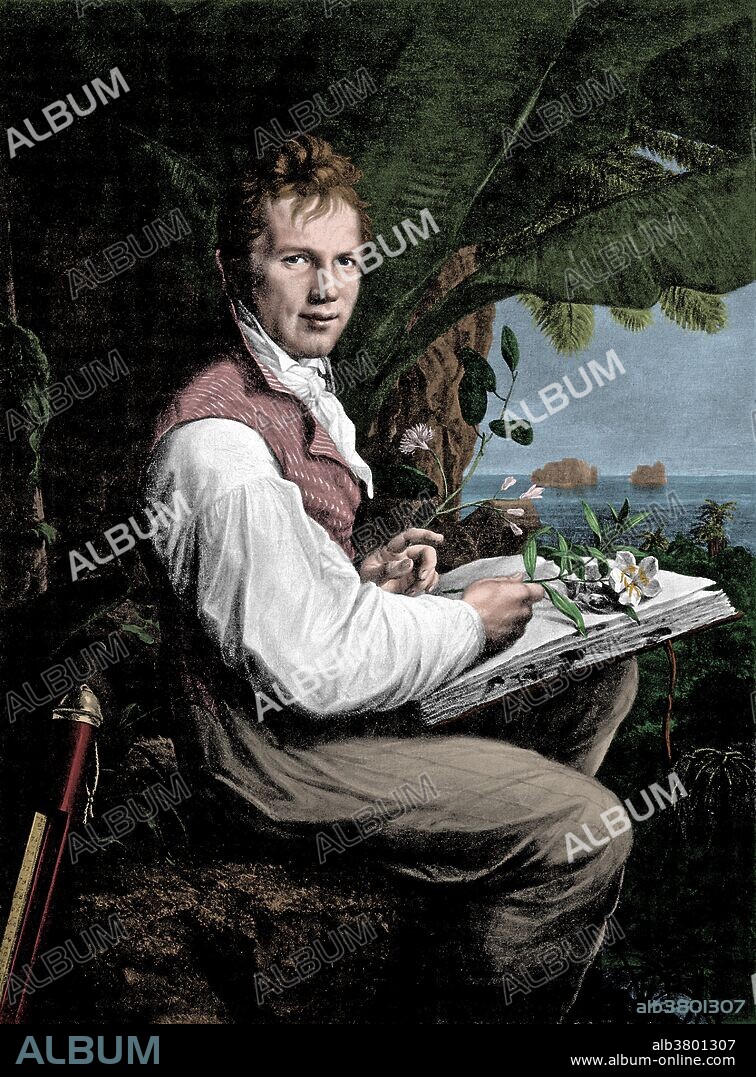alb3801307
Alexander von Humboldt, Prussian Naturalist

|
Ajouter à une autre Lightbox |
|
Ajouter à une autre Lightbox |



Avez-vous déjà un compte? S'identifier
Vous n'avez pas de compte ? S'inscrire
Acheter cette image.
Sélectionnez l'usage:

Titre:
Alexander von Humboldt, Prussian Naturalist
Légende:
Voir la traduction automatique
Friedrich Wilhelm Heinrich Alexander von Humboldt September 14, 1769 - May 6, 1859) was a Prussian geographer, naturalist and explorer. His quantitative work on botanical geography laid the foundation for the field of biogeography. Between 1799 and 1804, Humboldt travelled extensively in Latin America, exploring and describing it for the first time in a manner generally considered to be a modern scientific point of view. His description of the journey was written up and published in an enormous set of volumes over 21 years. He was one of the first to propose that the lands bordering the Atlantic Ocean were once joined (South America and Africa in particular). Later, his five-volume work, Kosmos (1845), attempted to unify the various branches of scientific knowledge. He thought an approach to science was needed that could account for the harmony of nature among the diversity of the physical world. For Humboldt, "the unity of nature" meant that it was the interrelation of all physical sciences, such as the conjoining between biology, meteorology and geology, that determined where specific plants grew. In 1857, Humboldt suffered a minor stroke, which passed without perceptible symptoms. It was not until the winter of 1858-1859 that his strength began to decline, and that spring he died quietly in his sleep at the age of 89. Photograph by Gustav Schauer.
Crédit:
Album / Science Source
Autorisations:
Taille de l'image:
3102 x 4200 px | 37.3 MB
Taille d'impression:
26.3 x 35.6 cm | 10.3 x 14.0 in (300 dpi)
Mots clés:
18 18E 18EME XVIII XVIIIE XVIIIEME SIECLE • 18E SIECLE • 18EME S • ALLEMAND • ALLEMANDE • CÉLÈBRE • CELEBRITE • CHERCHEUR • DECOUVREUR • DIX-HUITIÈME SIÈCLE • EUROPÉEN • EXPLORATEUR • EXPLORATION • GEOGRAPHIE • HOMME • ILLUSTRATION • LITHOGRAPHIE • PERSONNAGES • PERSONNALITÉS • PERSONNE • PORTAIT • PORTRAIT • POTRAIT • PRUSSIEN • SCIENCE DE LA NATURE • SCIENCES PHYSIQUES ET NATURELLES • XVIIIE SIECLE
 Pinterest
Pinterest Twitter
Twitter Facebook
Facebook Copier le lien
Copier le lien Email
Email
